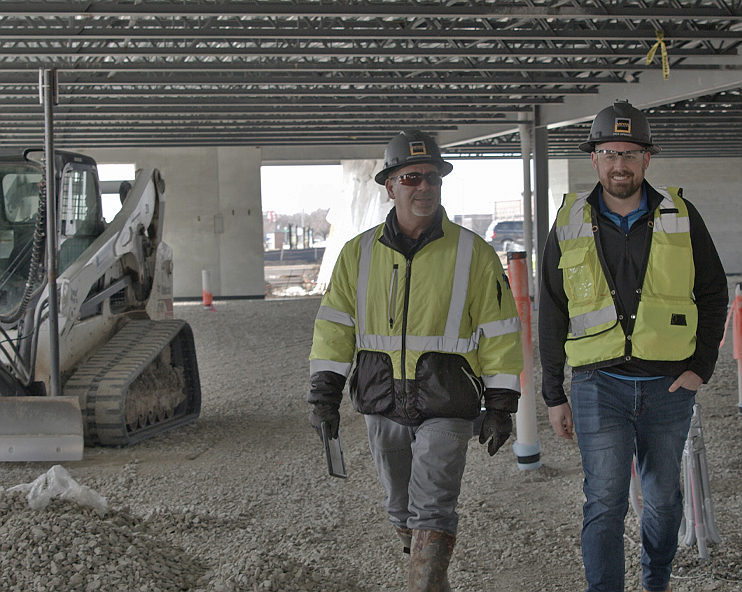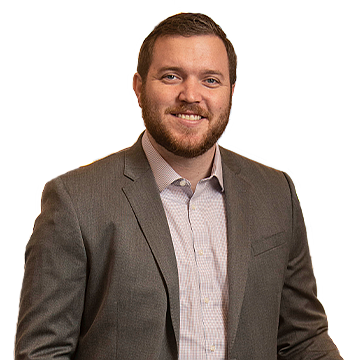
For leaders interested in growing their company or organization’s physical presence or renovating their existing environment, embarking on a construction project is an exciting moment filled with possibilities. At the same time, the experience can present challenges on multiple levels, from choosing how to approach the design and construction process to dealing with construction costs.
If you’re a project owner—an individual who initiates and helps lead building projects on behalf of your organization—how do you set the stage for success?
1. Clarify your vision and goals to guide decision-making.
Through the course of a design and construction project, a building owner will make a multitude of decisions. That’s why it’s critical to start out by outlining the purpose behind your project, what you want to achieve, and what success looks like for your organization, users, and stakeholders.

“Owners should know what they want to accomplish and how their project can help them address opportunities for improvement,” said Jeff Blount, chief operating officer of Meyer Najem Southeast. “Our focus is then making sure we support their vision moving forward so the project is advancing the cause of their business.”
By understanding what’s most important, you’re in a better position to make subsequent decisions that support your goals, including which design and construction partners you select and how you contract with them.
“It’s important for owners to select trustworthy partners who understand their business and create the right team for the task at hand,” Blount said. “Owners should align their design and construction team to their needs and the team’s strengths.”
2. Promote early involvement between disciplines.
A design and construction project involves many disciplines—architects, interior designers, multiple types of engineers, construction experts, and specialty consultants and contractors. Early involvement among disciplines increases opportunities for collaborative solutions that benefit the project and support its goals.
“Certain decisions can change the trajectory of a project,” said Ryan Soots, Meyer Najem’s Southeast executive vice president. “The sooner everyone works together, the better, because each discipline brings important and unique skillsets that make the project successful.”

When it comes to planning, designing, and building a facility, owners can choose from a variety of project delivery methods. Some of the contractual arrangements and delivery methods—like design/build, public/private partnerships, and construction manager (CM) at risk—engage a CM early on (versus after the design stage). This early involvement allows contractors to introduce valuable insights on material availability and pricing, constructability, quality, and creative solutions that help owners save time and money.
Meyer Najem has an in-house preconstruction team that specializes in this upfront work, collaborating with the client and design team to set the project up for success by aligning on budget, schedule, logistics, phasing, permitting, and approvals. Preconstruction also provides value by helping educate the client and stakeholders on what to expect.
3. Prioritize effective communication and collaboration throughout the project.
In addition to articulating your vision, goals, and expectations to the design and construction team early on, it’s important to establish clear lines of authority and communication. That way, the team understands how to approach decisions that need to be made throughout the project process. Consistent, clear communication and a spirit of collaboration make for a more seamless, positive experience for everyone.
Facility users and stakeholders should also be engaged from the very start of the project—and stay informed throughout—so they understand the intent and impact of decisions made during the project’s lifecycle.
Along with day-to-day communication, your design and construction team can leverage technology to enhance communication with you and your stakeholders.
“A lot of people who aren’t in construction find it challenging to visualize 2D drawings,” Soots said. “As a complement to our architectural partners, Meyer Najem can incorporate 3D modeling into virtual and augmented reality software to help users better visualize their future environments.”
For example, in the healthcare setting, virtual reality tools can help caregivers visualize patient rooms, guiding decisions on layout and functionality.
“Effective communication helps us meet our overall goal, which is to ‘get it right’ for the owner,” Blount said.
4. Dedicate resources to keep the project moving.
To further enhance effective communication, it’s helpful for owners to identify representatives who can make timely decisions on their behalf.
“We have some clients that have 50 projects going on, so their organization is used to managing projects. Others are going to build one facility in their lifetime,” Blount said. “Owners should realize their limitations, understand what it takes, and backfill if necessary to make sure they have the resources to keep moving everyone forward.”
This can happen internally, with a staff member who is available and empowered to make decisions, or by engaging a construction expert as a third party to manage the project as an extension of your staff.
5. Check assumptions related to construction materials and pricing.
As many owners and construction firms will attest, the past couple of years have included significant challenges with construction materials availability and pricing, due to supply chain issues and inflation. If it’s your first construction project—or your first one in several years—your budget and schedule expectations may or may not align with current market dynamics. This reinforces the importance of being nimble and having a collaborative, communicative team that can offer up ideas on how to overcome roadblocks, adapt to complexities, and ultimately, meet your vision.
“The easier we can make our clients’ lives, the better,” Blount said. “Ultimately, what defines a successful project isn’t just the 12 months or so when the facility is being built. It’s about what goes on after we leave the site and if the owner is better able to conduct business because of the experience.”
Learn more about Meyer Najem’s approach to construction projects. https://www.meyer-najem.com/services/)
Stay tuned for future articles that take a deeper dive on some of these success factors!